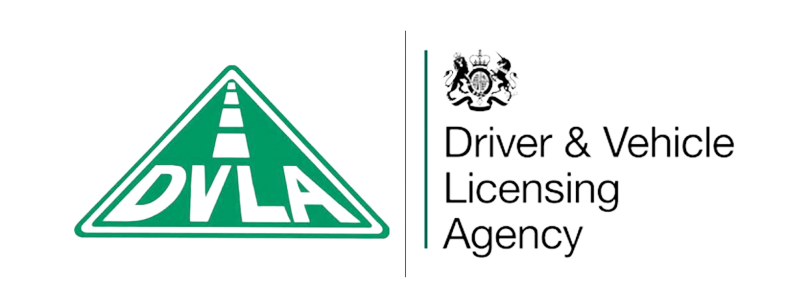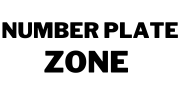Number Plate Zone
- 2B Seymour Street Off Pilsworth Road Heywood OL10 3BP
- Email: sales@numberplatezone.co.uk
- Phone: 01706 668 787
Checkout Securely Paypal & Viva Wallet
Business Hours Open 6 Days A Week
- Monday To Saturday 09.30 – 18.00
If you live in London or plan to visit the city by car, you may have heard of the Ultra Low Emission Zone (ULEZ). But what is it exactly and how does it affect you? In this blog post, we will explain what the ULEZ is, why it was introduced, where and when it operates, what vehicles are affected, and how much you need to pay if your vehicle does not meet the emissions standards.
What is the ULEZ?
The ULEZ is an area in London where an emissions standard based charge is applied to non-compliant road vehicles. It is part of the Mayor of London’s strategy to improve the air quality in the city and reduce the health impacts of air pollution. The ULEZ aims to discourage drivers of older and more polluting vehicles from entering the zone by charging them a daily fee. The ULEZ also encourages drivers to switch to cleaner and greener modes of transport, such as public transport, cycling or walking.
Why was the ULEZ introduced?
The ULEZ was introduced because London has a serious problem with air pollution, which affects the health and well-being of millions of people. According to Transport for London (TfL), air pollution contributes to thousands of premature deaths and hospital admissions each year in London. Air pollution also worsens chronic conditions such as asthma, lung and heart diseases. The main sources of air pollution in London are road transport, especially diesel vehicles, which emit harmful nitrogen oxides (NOx) and particulate matter (PM). The ULEZ aims to reduce these emissions by up to 45% by 2020.
Where and when does the ULEZ operate?
The ULEZ currently operates 24 hours a day, 7 days a week, every day of the year (except Christmas Day), within the same area as the Congestion Charge zone in central London. However, from 29 August 2023, the ULEZ will expand to cover all areas within the North and South Circular Roads. This means that millions of car and van drivers will be affected by the changes. The North Circular (A406) and South Circular (A205) roads are not in the zone.
What vehicles are affected by the ULEZ?
The ULEZ affects most types of vehicles, including cars, motorcycles, vans, minibuses, lorries, buses and coaches. However, different vehicles have different emissions standards that they need to meet to avoid paying the charge. The emissions standards are based on the European Union’s regulations for vehicle emissions, which are categorised by Euro standards. The Euro standards set limits for NOx and PM emissions for different types of vehicles.
The ULEZ emissions standards are:
– Euro 3 for motorcycles, mopeds and more
– Euro 4 for petrol cars, vans and minibuses (registered from 1 January 2006)
– Euro 6 for diesel cars, vans and minibuses (registered from 1 September 2015)
– Euro VI for lorries, buses and coaches (registered from 1 January 2014)
You can check if your vehicle meets the ULEZ emissions standards by using TfL’s online vehicle checker tool. You will need to enter your vehicle registration number and select the type of vehicle. The tool will tell you if you need to pay the ULEZ charge or not. You can also check if your vehicle is eligible for any discounts or exemptions from the charge.
How much do you need to pay if your vehicle does not meet the ULEZ emissions standards?
If your vehicle does not meet the ULEZ emissions standards and is not exempt or discounted, you need to pay a daily charge to drive within the zone. The charge depends on the type of vehicle:
– £12.50 for cars, motorcycles, vans and minibuses (up to and including 3.5 tonnes)
– £100 for lorries, buses and coaches (over 3.5 tonnes)
The daily charge runs from midnight to midnight. If you drive within the zone across two days, for example before midnight and after midnight, you need to pay two daily charges.
You can pay the charge online, by phone or by setting up an Auto Pay account. You need to pay the charge by midnight on the third charging day after driving within the zone. If you do not pay on time, you will receive a Penalty Charge Notice (PCN) of £160 (reduced to £80 if paid within 14 days).
What are some alternatives to driving within the ULEZ?
If you want to avoid paying the ULEZ charge or reduce your impact on air pollution, there are some alternatives to driving within the zone:
– Use public transport: London has an extensive network of buses, trains, tubes and trams that can take you to your destination. You can use an Oyster card, a contactless payment card or a Travelcard to pay for your journeys. You can also plan your route using TfL’s journey planner tool.
– Cycle or walk: London has many cycle routes and cycle hire schemes that you can use to get around the city. Cycling and walking are not only good for the environment, but also for your health and fitness. You can find out more about cycling and walking in London on TfL’s website.
– Switch to a cleaner vehicle: If you need to drive within the ULEZ, you can consider switching to a vehicle that meets the emissions standards or is zero-emission, such as an electric or hybrid vehicle. You can also check if you are eligible for the Mayor’s scrappage scheme, which offers grants to help you replace your older and more polluting vehicle with a cleaner one.
We hope this blog post has helped you understand what the ULEZ is and how it affects you. If you have any questions or feedback, please leave a comment below or contact us on our website.
Sources:
– https://tfl.gov.uk/ulez
– https://en.wikipedia.org/wiki/Ultra_Low_Emission_Zone
– https://www.rac.co.uk/drive/advice/emissions/ultra-low-emission-zone/

A 2D Number Plate is a standard number plate that is printed on a flat surface. The characters are raised slightly above the surface, but they do not have a 3D effect.
A 3D Number Plate is a type of number plate that has raised characters that give it a three-dimensional appearance. 3D Number Plates can add a touch of style to your vehicle
A 4D number plate is a type of number plate that has raised characters it gives a three-dimensional appearance, as well as a layer of transparent gel that is applied to the back.
An Oversized 3D Number Plate is a type of number plate that is larger than the standard sized raised characters that give it a three-dimensional appearance. Oversized 3D number plates are often used on luxury cars and sophistication to the vehicle.
An oversized 4D number plate is a type of number plate that is larger than the standard size and has raised characters that give it a three-dimensional appearance, as well as a layer of transparent gel that is applied to the back of the characters.
An oversized 4D + 3D number plate is a type of number plate that is larger than the standard size and has raised characters that give it a three-dimensional appearance. The raised characters are made with a polyurethane resin that is applied t
Fast UK wide delivery using the best couriers out there.
Each customer plate we make is unique to the individual.
Over 10 years in the plate making scene
2B, Seymour Street, OL10 3BP,
Telephone: 01706 668787
info@numberplatezone.co.uk

